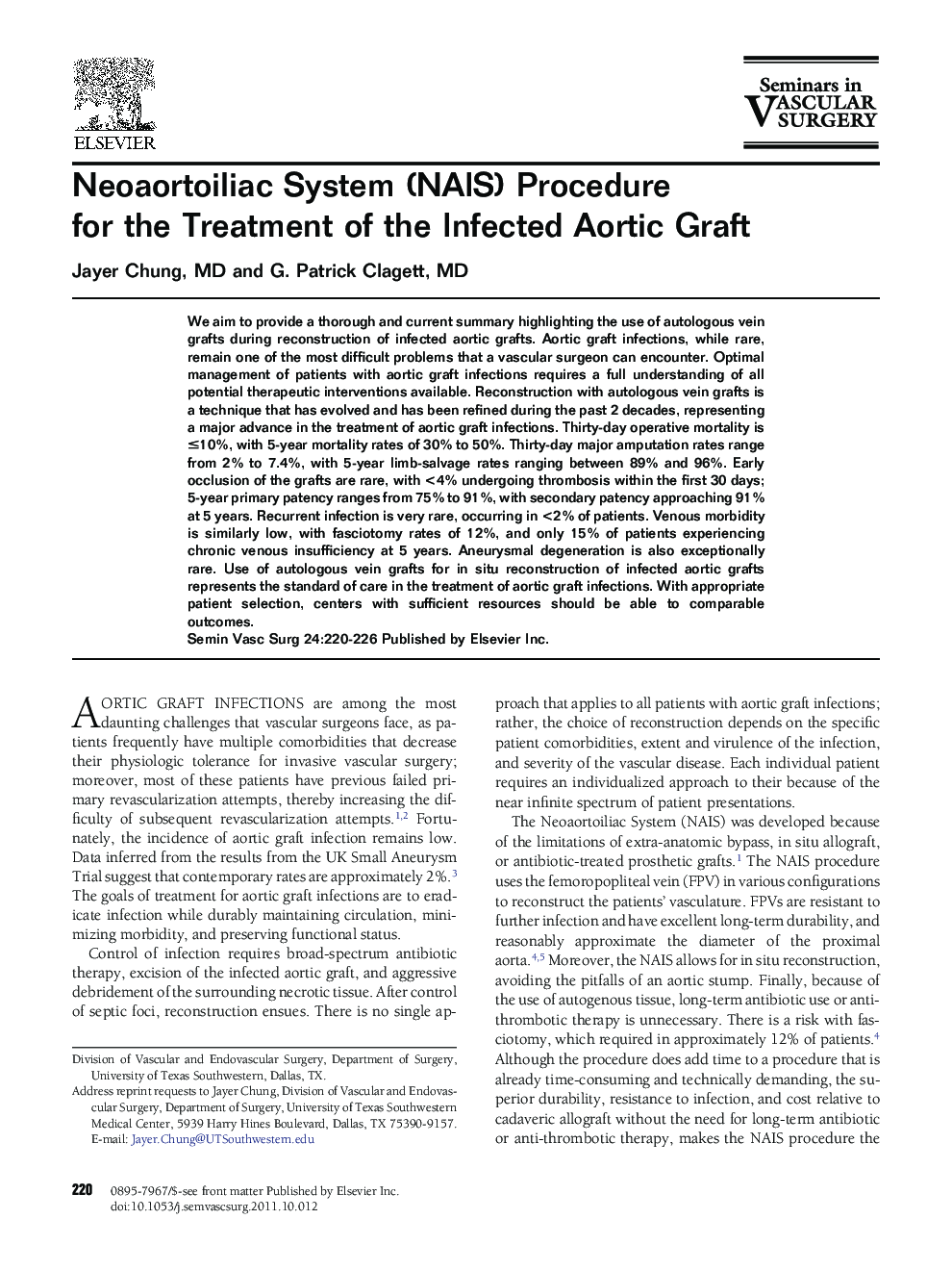| Article ID | Journal | Published Year | Pages | File Type |
|---|---|---|---|---|
| 3026142 | Seminars in Vascular Surgery | 2011 | 7 Pages |
We aim to provide a thorough and current summary highlighting the use of autologous vein grafts during reconstruction of infected aortic grafts. Aortic graft infections, while rare, remain one of the most difficult problems that a vascular surgeon can encounter. Optimal management of patients with aortic graft infections requires a full understanding of all potential therapeutic interventions available. Reconstruction with autologous vein grafts is a technique that has evolved and has been refined during the past 2 decades, representing a major advance in the treatment of aortic graft infections. Thirty-day operative mortality is ≤10%, with 5-year mortality rates of 30% to 50%. Thirty-day major amputation rates range from 2% to 7.4%, with 5-year limb-salvage rates ranging between 89% and 96%. Early occlusion of the grafts are rare, with <4% undergoing thrombosis within the first 30 days; 5-year primary patency ranges from 75% to 91%, with secondary patency approaching 91% at 5 years. Recurrent infection is very rare, occurring in <2% of patients. Venous morbidity is similarly low, with fasciotomy rates of 12%, and only 15% of patients experiencing chronic venous insufficiency at 5 years. Aneurysmal degeneration is also exceptionally rare. Use of autologous vein grafts for in situ reconstruction of infected aortic grafts represents the standard of care in the treatment of aortic graft infections. With appropriate patient selection, centers with sufficient resources should be able to comparable outcomes.
